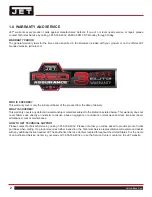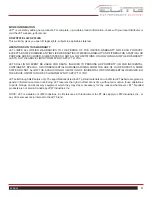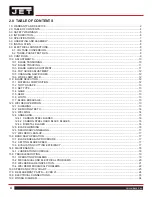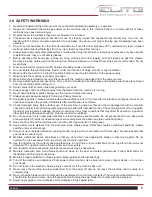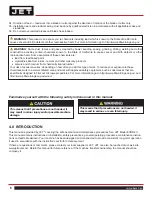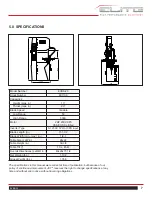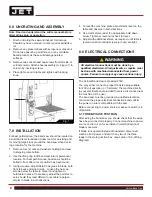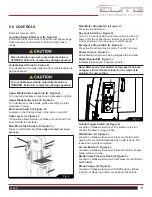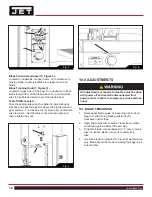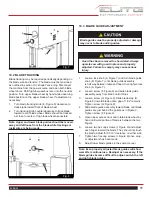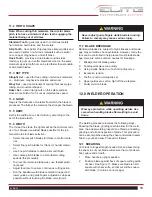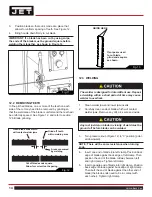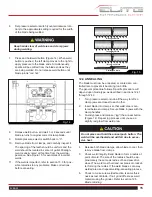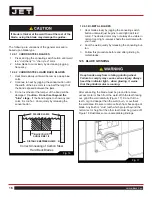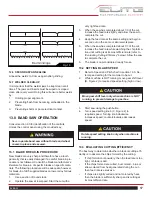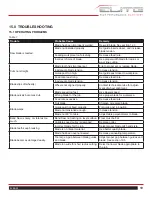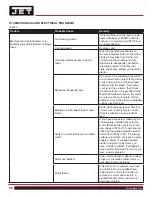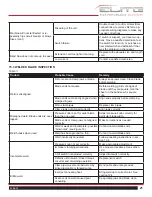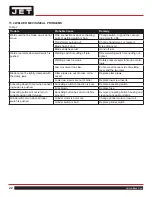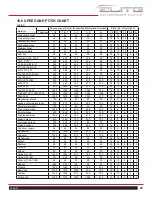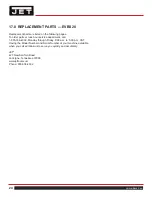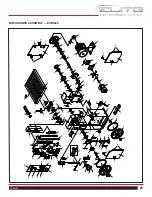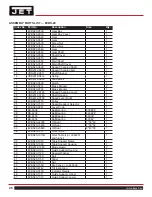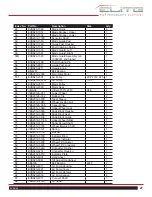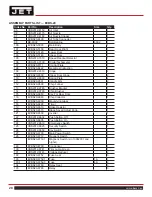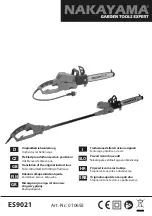
13
EVBS-20
11.7 BLADE BREAKAGE
Band saw blades are subject to high stresses and break-
age may sometimes be unavoidable. However, many fac-
tors can be controlled to help prevent most blade break-
age. Here are some common causes for breakage:
1. Misalignment of blade guides.
2. Feeding workpiece too quickly.
3. Using a wide blade to cut a short radius curve.
4. Excessive
tension.
5. Teeth are dull or improperly set.
6. Upper guides are set too high off the workpiece.
7. Faulty weld on blade.
12.0 WELDER OPERATION
The welding procedure involves the following steps:
Shearing the blade, grinding teeth to allow for the weld
area, the actual welding, inspection of blade, annealing,
grinding and a fi nal inspection of blade. This procedure
can be accomplished using the shear and welder assem-
blies on your band saw. Proceed as follows:
12.1 SHEARING
Cut blade to longest length needed for band saw. Using
the shear to cut your blade will ensure that cut ends are
fl at, square and smooth.
1.
Place handle in upright position.
2.
Position blade against back of square cutting guide
of shear. See Figure 11. Make sure blade is held
square with shear knife, so that cut will be square
with blade. (Continue on next page).
11.2 TOOTH SHAPE
Note: When cutting thin materials, the rule for blade
pitch is to have a minimum of two teeth engaging the
material being cut at all times.
Standard Tooth
- generally used to cut ferrous metals,
hard bronze, hard brass, and thin metals.
Skip Tooth
- have better chip clearance (larger gullet) and
are used on softer, non-ferrous materials such as alumi-
num, copper, magnesium, and soft brass.
Hook Tooth
- provides a chip breaker and has less
tendency to gum up in softer materials. Used in the same
materials as skip tooth but can be fed faster than standard
or skip tooth blades.
11.3 SET TYPE
Straight Set
– used for free cutting non-ferrous materials;
i.e., aluminum, magnesium, plastics, and wood.
Wavy Set
– used on materials of varying thickness (pipe,
tubing, and structural shapes).
Raker Set
– used in large cuts on thick plate and bar
stock where fi nish of cut is not as important as speed.
11.4 GAGE
Gage is the thickness of material from which the blade is
produced. The thicker the material, the stronger the blade.
11.5 KERF
Kerf is the width of a cut. Kerf will vary according to the
set of the blade teeth.
11.6 WIDTH
The thinner the blade, the tighter will be the minimum radi-
us of cut. Always use widest blade possible for the job.
General rules for blade selection:
•
Select coarser pitch blades for thicker or softer mate-
rial.
• Select
fi ner pitch blades for thinner or harder materi-
al.
• Use
fi ne pitch blades to obtain a smooth fi nish.
•
Use coarse pitch blades to obtain faster cutting
speeds (thick material).
•
To prevent premature blade wear, use fastest practi-
cal
speed.
•
Adjust feed rate to ensure continuous cutting action.
•
Run the bandsaw with blade centered in upper and
lower guides, and guide fi ngers adjusted as close as
possible without touching the blade or weld joint.
!
Never adjust guide fi ngers while blade is running.
Failure to comply may cause serious injury.
!
Wear eye protection while operating welder. Use
care when handling blade after welding to avoid
burns.
Содержание 891100
Страница 34: ...34 Vertical Band Saw 19 0 WIRING DIAGRAM ...
Страница 35: ...35 EVBS 20 NOTES ...
Страница 36: ...36 Vertical Band Saw NOTES ...


